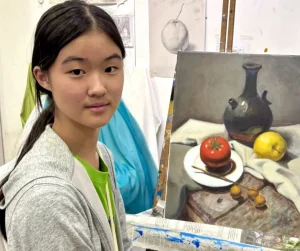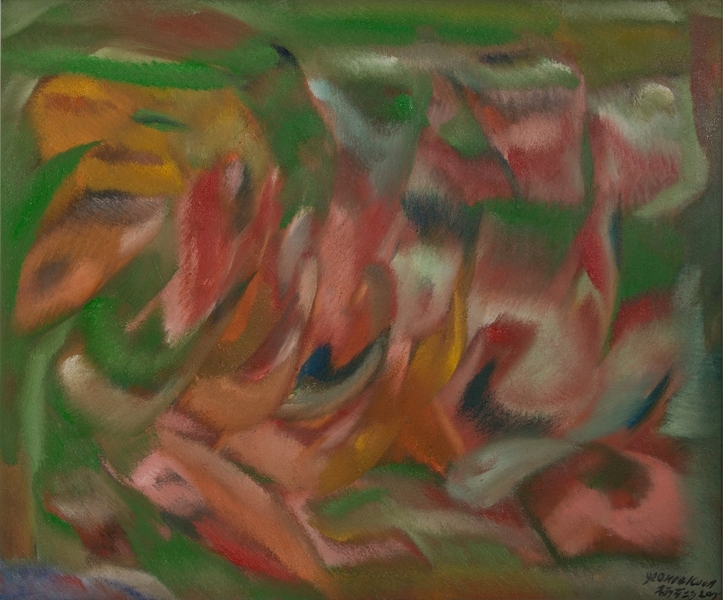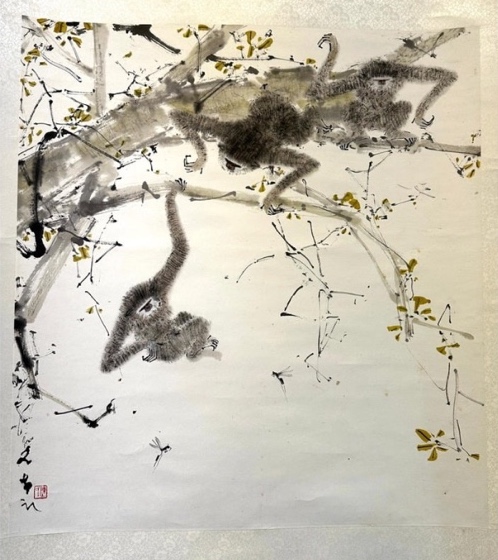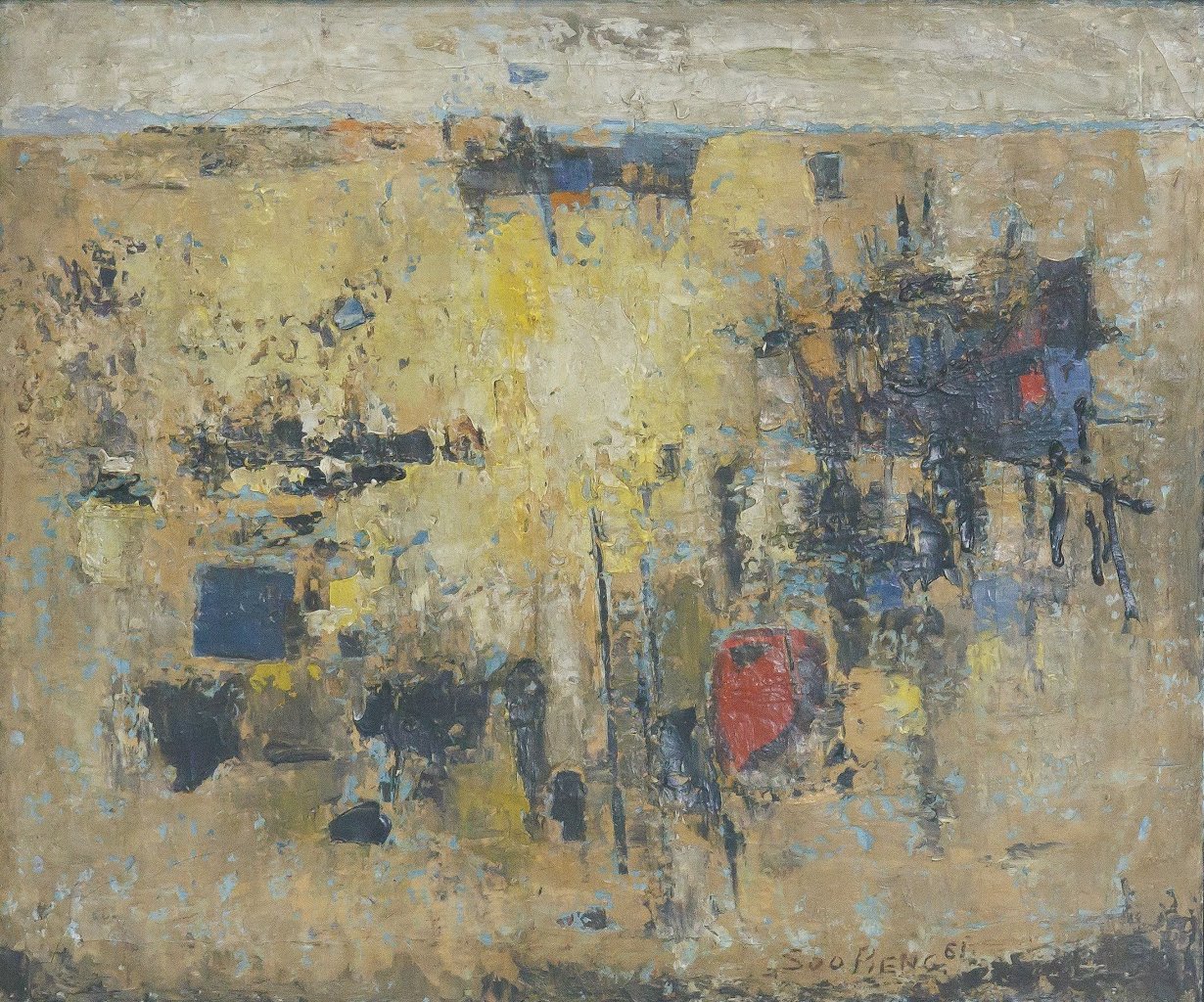Acrylic Painting on Canvas Team Bonding Art Jamming Singapore Visual Arts Centre
























Yeo Hoe Koon
Oil on Canvas
64 x 89.5 cm
Price Range: $16,000 - $20,000

Yeo Hoe Koon
Oil on Canvas
101 x 123 cm
Price Range: $26,000 - $32,000

Chen Wen Hsi
Chinese Ink and Color on Paper
50 x 54cm
Price Range: SGD $42,000 - $50,000

Cheong Soo Pieng
Red Tone
61 x 91.5cm
Price Range: SGD $108,000 - $138,000

Cheong Soo Pieng
Abstract Landscape
50 x 61cm
Price Range: SGD $95,000 -$128,000

Fan Shao Hua
Chinese Ink and Colour on Paper
100 x 100cm
Price Range: SGD $9,800 - $14,800

Fan Shao Hua
Chinese Ink and Colour on Paper
100 x 100cm
Price Range: SGD $8,800 - $13,800
Clement Young, The Straits Times, Tuesday 26 September 2023

Fan Chang Tien’s Landscape (right) is one of 50 Chinese ink and calligraphy works on show at Masterpieces Of Ink And Calligraphy, curated by Ms Iola Liu (left). PHOTOS: COURTESY OF IOLA LIU, ASIA ART COLLECTIVE
Created at Tuesday Sep 26, 2023
Pioneer Singapore artists broke Chinese ink painting rules
“It’s a matter of perception,” says Ms Liu, who has curated multiple Chinese ink shows. “Ink painting has been a mainstream medium in China, and these paintings are more expensive than oil paintings there.
“In Singapore, we are more used to the bolder colours of oil painting, which we are taught are more pleasing.”

Works by Fan Chang Tien (Left) and Ling Cher Eng (Right) will be on show at the exhbitions. PHOTOS ASIA ART COLLECTIVE
Ms Liu says of Phua’s Six Malay Ladies Resting, which features the iconic figures inherited from his teacher Cheong Soo Pieng: “The portraits are realistic, using unique colours to South-east Asia the skin tone is something you wouldn’t see anywhere else in ink painting.”
Even when these Singapore art- ists were painting traditional subjects like the Four Gentlemen – referring to the plum blossom, or chid, bamboo and chrysanthemum they reinterpreted and reimagined them, adds Ms Liu.
“Fan came from a Chinese literati tradition and persevered in the classical style, and his works are not out of place when compared with Chinese painters of his era.
“In Ling and Phua’s generation of Singaporean and Malaysian painters, they were more clearly in- spired by the environment of South-east Asia – the hot and tropical climate, the multiracial people and diversity.”
Ms Liu, who is not related to the artist, says his return to the medium signalled how important ink had always been for first-generation artists, who were likely first exposed to it in school, even before Western art.
Coincidentally, the ongoing Cheong retrospective at Artspace@Helutrans also has a section showing his take on the Song Dynasty Chinese ink painting tradition yet another first-generation artist who returned to ink in his later life.
Inspired by recent multi-sensory exhibitions such as Van Gogh: The Immersive Experience at Resorts World Sentosa, Ms Liu has also planned a tea appreciation session to spruce up the perhaps more dowdy image of a Chinese ink exhibition.
During a paid programme on Oct 8, a tea sommelier will be present and an artist station will be set up so participants can immerse them- selves in the feel of carrying ink across paper with a brush.
Asked why she likes Chinese ink, Ms Liu says it is a pleasant medium that has a wealth of great artists awaiting discovery.
Though these paintings may be harder to keep than oil paintings, given Singapore’s humidity, she promises it will be worthwhile.
“Chinese ink in Singapore is as good as those in China, Japan and South Korea. It is bold in a way that is unique to our heritage, a combi- nation of East and West.”

MASTERPIECES OF INK AND CALLIGRAPHY – LING CHER ENG, PHUA CHENG PHUE, FAN CHANG TIEN AND LIU KANG
WHERE : Visual Arts Centre, 01-02 Dhoby Ghaut Green, 10 Penang Road
WHEN : Oct 5 to 11, 11 am to ppm daily
ADMISSION : Free
Click and get to our WhatsApp
Embark on a captivating journey into the vibrant world of digital art! Our Foundation in Digital Art workshop invites budding creatives aged nine and above to unleash their imagination and hone their artistic skills in a dynamic, supportive environment. From mastering basic digital tools to crafting mesmerizing digital masterpieces, children will explore a spectrum of techniques guided by seasoned mentors. Through hands-on activities and interactive sessions, participants will discover the endless possibilities of digital expression while fostering creativity and critical thinking. Join us for an exhilarating adventure where young artists transform ideas into stunning visual realities, igniting a passion for digital art
In the Batik Introduction Handkerchief Painting workshop, participants will learn the traditional art of batik, a wax-resist dyeing technique originating from Indonesia. The workshop begins with a brief history and overview of batik, highlighting its cultural significance and various techniques. Participants will then observe a demonstration of applying wax with tjanting tools and dyeing the fabric. Following the demonstration, each participant will design and create their own batik handkerchief, applying wax to create patterns and then dyeing their fabric. The workshop concludes with a group discussion, allowing participants to share their creations and reflect on their learning experience.